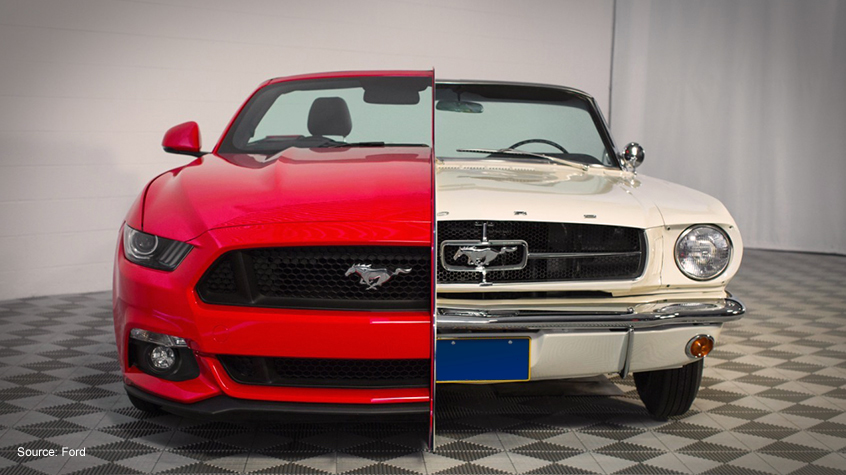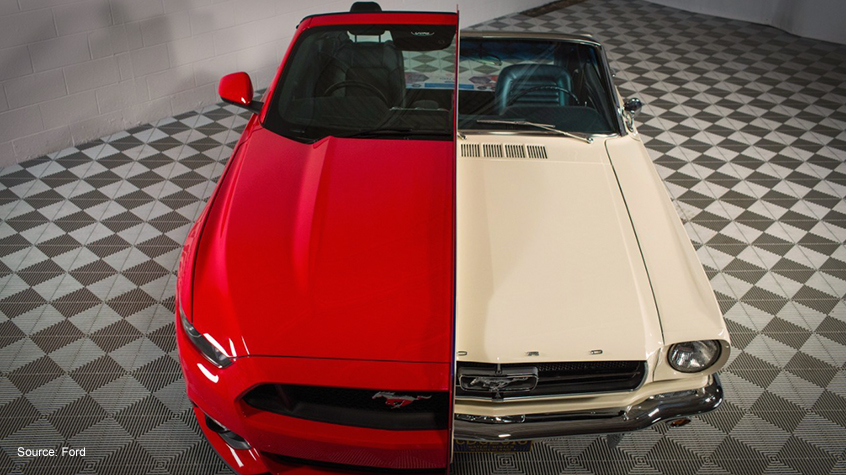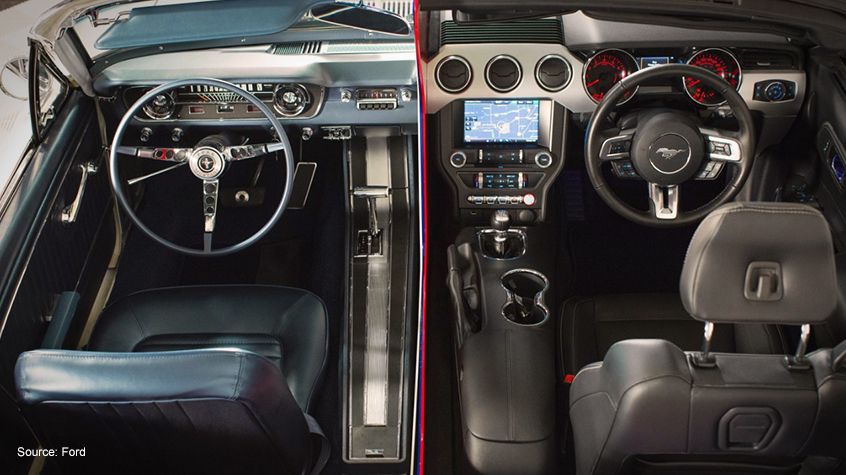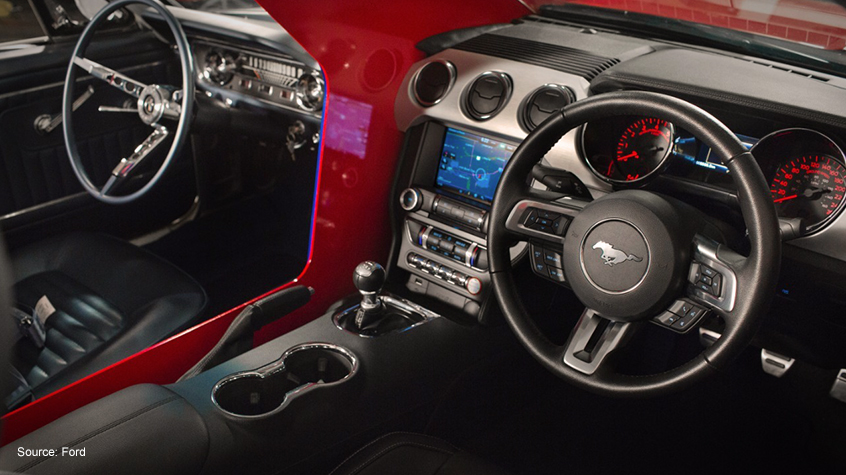
When Ford first released the Mustang in 1965, this was the car that our fathers worked toward. And today, gearheads all over the country pine after the same ride. So how has the mighty Mustang changed in the last 50 years? And how has it stayed the same? Ford decided to answer these questions, splitting its ‘Stang in half as part of an exhibition with the National Inventors Hall of Fame Museum. Here’s what we learned from the experiment:
1. Exterior

Youth culture has become entranced by 60s style lately, and cars are no exception to the trends. It’s clear that the 6th generation Mustang makes plenty of retro nods to its classic counterpart. The original car came as a hard-top coupe or convertible and includes a long nose, short rear deck, and an unmistakable air of nostalgia to match. But of course, with time, comes innovation. So naturally, more than a few tweaks had to be made to the body to keep up with the competition. The modern Mustang is sleeker than ever, sporting a more aerodynamic windshield, LED running lamps, and a new aluminum hood and fenders.
2. Interior

It’s no secret: Cars have certainly evolved since the first Mustang hit the streets. Your stock classic ‘Stang featured “wall-to-wall” carpeting, front bucket seats, front seat belts, a rear seat speaker and floor mounted shifter. No doubt, the vintage version made history with its internal aesthetics. But the sixth-generation ride takes cockpit comfort to another dimension. Radar-guided cruise control, blind spot warning, cross traffic alert, and a touchscreen infotainment system complete with bluetooth sync capability and a 6-speaker stereo. Yep, lots of hi-tech flare to flaunt. But take a closer look and you can see that Mustang soul is still in tact.
3. Performance

Ford unleashed Mustang on the world a few months before the 1965 production year, so early models are unofficially classified as 1964½ Mustangs. The “1964½” base model featured a 2.8L 6-cylinder engine with 101HP, available in automatic or 3-speed manual transmission. Fast forward to late ‘65: the highest performing Mustang available repped a 4.7L Hi-Po Windsor V8 with 271HP and the option for a 4-speed manual. Not too shabby for the time. These days, Ford still features that classic 5L V-8. But tack on a modern valvetrain and cylinder heads and the sixth generation turbocharged Mustang GT cranks out up to 420HP and 390 lb-ft of torque. Even the base model has 3.7 V-6 and 300HP. Finally, Ford’s EcoBoost option delivers on both fuel economy and performance (305HP), making it the most modern Mustang engine to date.
Alright then. Now you’ve taken an inside and outside look at both Mustang models. So that only leaves one question: Which Mustang would you rather have? The first generation ‘65 or the sixth-generation 2015?
- Valvoline does not endorse any of the products or manufacturers listed above. Use at your own risk.
- Valvoline does not guarantee, approve or endorse the content available on linked sites.


Don't miss out on new content
Thanks for signing up. Set your password and start earning reward points for everything you do on the site.
You already have a Team Valvoline account. Sign in here.
Did you forget your password?